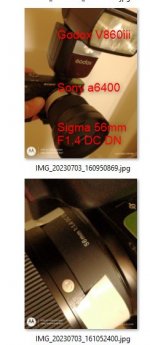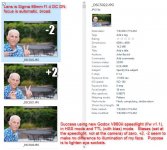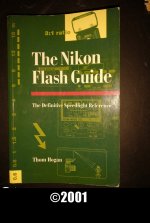John Becich
New member
I believe I have a warranty claim against Godox,and I'd appreciate any duplication of failure, by readers of this thread. Also, some portraiture enthusiasts might find my predicament to be interesting.
I am invested in Sony APS-C camera bodies and Godox illumination components. Recently I acquired a much-celebrated-on-YouTube Sigma 56mm f/1.4 DC DN portrait lens that takes ultra-sharp pictures; it is built for my APS-C sensor size, and has an e-mount for Sony camera usage. High Speed Sync, meanwhile, remains an indispensible tool of modern creative photography. So does "reacting quickly" and that means I no longer shoot in full manual mode, as I had with film cameras. Enough background... I found a flawed combination and it is caused by a "failure to communicate" ... electronically... between differently-branded components. When I shoot in TTL-mode, HSS images are burned by full light output by the V860iii; when my Sony a6400 camera has the V860iii speedlight in the camera's hot shoe AND the Sigma 56mm lens in use. A Sony SEL18135 (zoomable) lens never had this problem, and still does not have this problem.
At first I suspected "inadequate design" in the Sigma 56mm lens, as it was bought only a few days ago, while my speedlight is 11 months into its duty atop my camera. Then I replaced the speedlight with a wireless transmitter (Godox X2T) in the hot shoe ... so as to activate any and all illuminators wirelessly. Sigma 56mm lens in use. No more burned images.
That means the X2T could, indeed, communicate with camera and lens, thereby instructing the illuminators (wirelessly) to throttle light output.
Hence, my belief that my Godox V860iii speedlight is failing to communicate with the other equipment components, when said speedlight is positioned in the hot shoe of the camera.
Thank you for any experiments or similar experiences.
I am invested in Sony APS-C camera bodies and Godox illumination components. Recently I acquired a much-celebrated-on-YouTube Sigma 56mm f/1.4 DC DN portrait lens that takes ultra-sharp pictures; it is built for my APS-C sensor size, and has an e-mount for Sony camera usage. High Speed Sync, meanwhile, remains an indispensible tool of modern creative photography. So does "reacting quickly" and that means I no longer shoot in full manual mode, as I had with film cameras. Enough background... I found a flawed combination and it is caused by a "failure to communicate" ... electronically... between differently-branded components. When I shoot in TTL-mode, HSS images are burned by full light output by the V860iii; when my Sony a6400 camera has the V860iii speedlight in the camera's hot shoe AND the Sigma 56mm lens in use. A Sony SEL18135 (zoomable) lens never had this problem, and still does not have this problem.
At first I suspected "inadequate design" in the Sigma 56mm lens, as it was bought only a few days ago, while my speedlight is 11 months into its duty atop my camera. Then I replaced the speedlight with a wireless transmitter (Godox X2T) in the hot shoe ... so as to activate any and all illuminators wirelessly. Sigma 56mm lens in use. No more burned images.
That means the X2T could, indeed, communicate with camera and lens, thereby instructing the illuminators (wirelessly) to throttle light output.
Hence, my belief that my Godox V860iii speedlight is failing to communicate with the other equipment components, when said speedlight is positioned in the hot shoe of the camera.
Thank you for any experiments or similar experiences.






